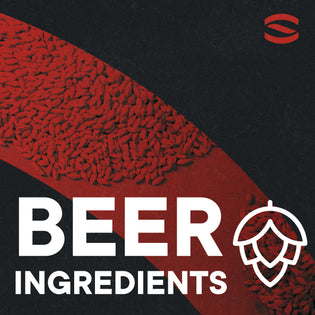Looking to become a homebrewing master? Or, maybe you’re simply looking for information before getting started. Either way, you’re in the right place! Homebrewing is a fun and rewarding hobby that has been around for centuries (seriously, centuries). It allows you to take control of the brewing process and create a unique beer that reflects your tastes and preferences. You can brew beer at home relatively easily with the right supplies and equipment.
The supplies and equipment you need to homebrew will depend on the type of beer you want to make. For example, if you’re making an all-grain beer, you will need grains, hops, yeast, and other adjuncts. If you’re making an extract beer, you will need an extract, hops, yeast, and other adjuncts. You will also need a brewing kettle, fermenter, bottling equipment, and other accessories.
With this in mind, the cost of homebrewing can vary depending on the supplies and equipment you need. Generally, you can expect to spend around $100-$200 for basic equipment and supplies. However, you can spend more or less depending on the type of beer you want to make and the quality of the equipment and supplies you purchase.
This guide will provide:
- An overview of the supplies and equipment you need to homebrew beer
- The cost of homebrewing
- Tips on the easiest beer to brew at home and the benefits of homebrewing

What Supplies Do You Need To Homebrew?
As mentioned earlier, homebrewing is an exciting activity. However, you’ll need to gather the right supplies and equipment before brewing. Below is a list of all the supplies and equipment you’ll need for homebrewing.
Grains
Malted grains are the backbone of any homebrewing recipe and are essential for creating the flavor and body of the beer. A wide variety of grains are available to homebrewers, including barley, wheat, oats, rye, and more. The type of grain used will depend on the style of beer being brewed, with some beers requiring a certain type or combination of grains.
When purchasing grains for homebrewing, it is essential to look for fresh grains that are stored properly. Grains can be purchased in bulk from homebrew supply stores or in pre-measured amounts from online retailers. It is crucial to store grains in an airtight container in a cool, dry place to ensure the best quality and flavor.

Hops
Hops are a key ingredient in beer, providing bitterness and aroma. They also act as a preservative and help to balance out the sweetness of the malt. When choosing hops for homebrewing, there are a few things to consider.
- Variety: The variety of hops you select will determine the overall aroma of your beer. Different hop varieties have different levels of bitterness, aromas, and flavors. The most common varieties used in homebrewing are Cascade, Centennial, Chinook, and Amarillo.
- Alpha Acids: You should also consider the alpha acid content of the hops you select. Alpha acids are responsible for the bitterness of the beer, and the higher the alpha acid content, the more bitter the beer will be. Generally, hops with higher alpha acid content are used for bittering, while hops with lower alpha acid content are used for aroma.
- Freshness: You should also consider the form and freshness of the hops you purchase. Hops are a perishable ingredient, and their flavor and aroma can fade over time. When purchasing hops, make sure to check the expiration date and buy from a reputable source.
Yeast
Yeast is an essential ingredient in homebrewing, as it is the microorganism responsible for the fermentation of the wort. In other words, yeast is what turns the sugars from the malt into alcohol. Afterall, without yeast, you wouldn’t be able to make beer!
When it comes to selecting the right yeast for your beer, there are a few things to keep in mind. First, you need to decide what type of beer you want to make. Different types of beer require different types of yeast. For example, lagers require a bottom-fermenting yeast, while ales require a top-fermenting yeast.
When selecting the yeast, you also need to consider the temperature range that the yeast can tolerate. Most yeast can tolerate temperatures between 60-70 degrees Fahrenheit, but some can tolerate temperatures as low as 32 degrees.
Finally, you need to consider the flavor profile that the yeast will contribute to the beer. Different yeasts will contribute different flavors and aromas to the beer, so you need to make sure that the yeast you select will complement the flavor profile of the beer you’re trying to make.
When it comes to buying yeast, there are a few options. You can buy dried yeast, which is less expensive and has a long shelf life. Alternatively, you can buy liquid yeast, which does expire more quickly, but there is a wider range of options! Whichever option you choose, make sure that you follow the instructions on the package carefully.
Additional Adjuncts
When it comes to homebrewing, it’s important to remember that there are a variety of ingredients that can be used to create a unique flavor profile. Adjuncts are ingredients that are added to the beer after the boil, and can be used to enhance the flavor and aroma of the beer. Common adjuncts that can be used in homebrewing include fruits, spices, herbs, and other flavorings.
Fruit is a great way to add a unique flavor to your beer. Popular fruits used in homebrewing include oranges, cherries, raspberries, and blueberries. Fruit can be added directly to the fermenter or can be added whenever.
Pro Tip: If you added fruit to the fermenter, do not bottle the beer immediately after adding fruit as fermentation could restart, causing the bottle to burst. Wait to bottle a couple weeks after adding fruit.
Brewing Kettle
Brewing kettles are an essential piece of homebrewing equipment that every brewer needs in order to make great beer. A brewing kettle is a large pot that is used to boil the wort (unfermented beer) and add hops, adjuncts, and other ingredients to the mixture.
When choosing a brewing kettle, the size is the most important factor. The size of the kettle should be based on the amount of beer you plan to brew.
Pro Tip: A general rule of thumb is that you should have at least 3 gallons (11.4L) of space for every 5 gallons (19L) of beer you plan to brew.
This will give you enough room for the wort to boil and for the hops and other ingredients to be added. You can check out Brew Kettles and see which works for you.

Fermenter
A fermenter is an essential piece of equipment for any homebrewer. It is a container in which the beer is fermented and stored. This is where the yeast will work its magic and transform the sugars in the wort into alcohol. The fermenter needs to be airtight so that no oxygen can get in and spoil the beer.
The most common type of fermenter is the plastic bucket. These are inexpensive and easy to use. They come in a variety of sizes to fit your brewing needs. They are lightweight and have a wide lid which makes it easy to access the beer and clean the fermenter.
Glass carboys are also popular among homebrewers. They are more expensive, but they are also more durable and have a smaller opening which makes it easier to keep oxygen out. They also come in a variety of sizes, from 5-gallon to 6.5-gallon.

Bottling Equipment
Bottling your homebrewed beer is an important step in the brewing process. It allows you to store and share your beer with friends and family. To bottle your beer, you will need a few essential pieces of equipment.
Bottles are the most obvious piece of equipment you will need. The most common type of bottles used in homebrewing are 12 oz. longneck bottles. These bottles are usually made of glass and are designed to be reused. You can also purchase plastic or aluminum bottles, but they are not as common. You will need to make sure that whatever type of bottle you choose is compatible with your bottle capper.
A bottle capper is a device used to seal the bottles after they have been filled. This is done by crimping a metal bottle cap onto the top of the bottle. Bottle cappers come in manual and electric versions, depending on your preference.
You will also need a bottling wand. This is a plastic tube with a valve at the end that is used to fill the bottles. The bottling wand is inserted into the bottle and the valve is opened to fill the bottle with beer. It is important to make sure that the bottling wand is sanitized before use to prevent contamination.
Finally, you will need a bucket or carboy to transfer the beer from the fermenter to the bottles. You can use either a plastic or glass carboy, depending on your preference. The carboy should be sanitized before use to prevent contamination.
These are the essential pieces of equipment you will need to bottle your homebrewed beer. With the right supplies, you can easily bottle your beer and share it with friends and family.
Other Accessories
When it comes to homebrewing, there are a few additional items that can make the process easier and more enjoyable. These include items such as a thermometer, a hydrometer, a wort chiller, and a bottle capper.
A thermometer is essential for monitoring the temperature of your wort during the boiling process, as well as during fermentation. It’s important to keep an eye on the temperature of your beer, as it can affect the flavor and alcohol content of the final product.
A hydrometer is also a useful tool for measuring the specific gravity of your wort. This will help you determine the alcohol content of your beer, as well as the amount of sugar that is present. You can shop online here for different brewing accessories that suit your purpose.
What Is The Cost Of Homebrewing?
When it comes to homebrewing, the cost can vary greatly depending on the type of beer you are brewing and the equipment you choose to use. Generally, the cost of homebrewing can range from around $50 to $200 for basic supplies and equipment.
This cost can vary depending on the type of beer you are brewing and the equipment you choose to use. If you are looking to save money, you can purchase used equipment and ingredients online or from homebrewing supply stores. With a little bit of research, you can find the supplies and equipment you need to get started homebrewing at a price that fits your budget.
The basic supplies you will need to start homebrewing include grains, hops, yeast, and other adjuncts. Visit our homebrewing online store to learn more about the prices of these supplies and equipment.
What Is The Easiest Beer To Brew At Home?
Brewing beer at home is a rewarding and fulfilling experience that can be enjoyed by all. However, getting started can be overwhelming, especially for those with little experience. Fortunately, there are plenty of easy-to-brew beer recipes that are perfect for beginners.
The easiest beers to brew at home are typically light ales, such as American pale ales, blondes, and cream ales. These beers are generally low in alcohol, light in color, and have a mild hop character. They are also often fruity and sweet, making them enjoyable for a wide range of beer drinkers.
What Are The Benefits Of Homebrewing?
Homebrewing is an incredibly rewarding hobby that can be enjoyed by anyone. Not only is it a great way to make your own craft beer, but there are several benefits to homebrewing.
First and foremost, homebrewing can be significantly cheaper than buying beer from a store. As long as you have the right supplies and equipment, you can brew beer for a fraction of the cost of buying it. In addition, you have much more control over the ingredients you use and the flavor of your beer.
Another great benefit of homebrewing is that it allows you to experiment with different ingredients and recipes. You can try new combinations of hops, grains, and yeast to create unique flavors and styles of beer. This can be a great way to explore new flavors and find your favorite type of beer.
Finally, homebrewing can be a great way to connect with other people who share your passion for beer. Thanks to the Spike Community there are plenty of ways to meet other homebrewers and share tips and advice. Homebrewing can be a great way to make friends and learn more about the craft beer industry.

Final Thoughts: Homebrewing Your Way
Homebrewing is a rewarding and enjoyable hobby that can be done by anyone. It allows you to express your creativity and make beer that is tailored to your individual tastes. With the right supplies and equipment, you can easily brew beer at home in your own kitchen.
The Brewing Systems are relatively inexpensive and can be found at most homebrewing stores.
For more information, head over to the Spike Learn page for everything you need to know about becoming a homebrewing superstar!
You can also check out our Brewing 101 Video to get started!





